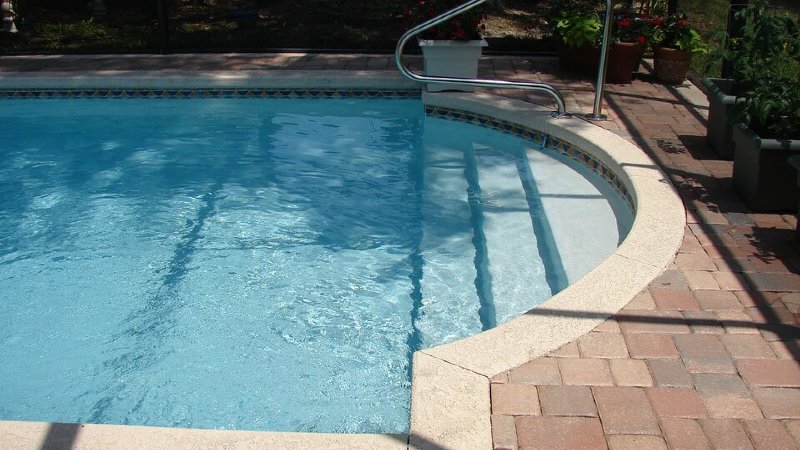- Home
- Troubleshooting
- Get Rid of White Water Mold and Pink Slime
Get Rid Of White Water Mold and Pink Slime In 10 Steps
White water mold and pink slime are sometimes misunderstood in the swimming pool world. Let's clear up the confusion. By the time you notice any mold or pink slime, chances are your hot tub or pool is infested. Like having roaches, you'll see 10, but there's 10,000 in your house.

What Is White Water Mold?
White water mold is actually a type of common fungus found in certain bodies of water. Not all fungi are bad, it's just you don't want this type of white water mold growing in your pool or hot tub.
What Is Pink Slime In A Pool?
Pink slime in a pool is sometimes referred to as pink algae, but this is a misappropriation of words. Pink slime is not an algae, it's a bacteria. Pink slime can also be found in the drain of your bathroom sink, shower curtain, and in the toilet. Pink slime loves moist areas that don't see much maintenance or scrubbing. Pink slime can also be dangerous to humans and pets. It can cause all kinds of illnesses such as respiratory illness. When you see pink slime in your tub or sink, it's important to take the right steps to get rid of it. If you see pink slime in your pet's dish, you should clean and sanitize it immediately to prevent illness. Make sure to clean your pet's water bowel a couple times a week to prevent pink slime.
What Causes White Water Mold and Pink Slime Mold?
White water mold and pink slime are naturally occurring substances found in nature. When the environment is correct, this fungus and bacteria can easily grow and multiply. If you find it in your pool or hot tub, it's probably because your pool isn’t clean and/or the water isn’t properly balanced. It can happen from time to time, but no worries. You can get rid of it.
How To Get Rid Of White Water Mold In A Chlorine Pool
It’s important to your success to properly clean your pool and follow these steps as best you can. We're dealing with living organic matter. Any living white water mold that's not killed and removed from your pool can start to reproduce and grow again, and then you're right back to square one.
1. Clean Your Filter
I can make one promise to you. If white water mold is in your water, I gaurentee it's in your filter. Best bet is to thoroughly backwash and clean your sand or DE filter with a dedicated filter cleaner. You can also remove the grids from your DE filter, spray them off, reinstall them, and add the appropriate amount of DE. Spray your cartridge filter out and use a filter cleaner. If your cartridge filter is too old, simply throw it away and get a new one.
2. Balance The Water
Decrease your pH level to 7.0 - 7.2, alkalinity to 80 - 120 ppm, and CYA to 30 - 50 ppm. I use and recommend the Taylor K-2006 pool test kit.
3. Shock The Pool
Increase and maintain your pool's chlorine level to 20 ppm using liquid chlorine. If that's not available, then use calcium hypochlorite shock. It's vitally important you properly shock your pool. Shocking your pool at night yields the best results. Watch the video below to see how it's done.
4. Brush The Pool
Use a stiff nylon brush and thoroughly brush the pool’s bottom and walls. For plaster and concrete pools, you can use a wire brush. Never use a wire brush on a vinyl or fiberglass pool. Your goal is to brush as much of the white water mold off the surface as possible. Remember to brush around the skimmer, returns, behind ladders, and everywhere you might think white water mold might be hiding.
5. Keep Filtering
Keep that pump motor on and don't turn it off until the process is complete.
6. Shock The Pool Again
That's the process of shocking a pool. It's maintaining a high chlorine level long enough to kill the white water mold.
7. Brush The Pool Again
You'll want to brush at least 2 times per day. This keeps the white water mold in suspension so it can get filtered and backwashed out.
8. Clean The Filter Again
Give your DE or sand filter a good backwash. For cartridge filters, take them out, rinse them off, soak them in a filter cleaner, rinse them off again, and reinstall them.
9. Vacuum The Pool
Forget about your automatic cleaner or robotic cleaner. This time you'll need to manually vacuum your pool to WASTE. Vacuuming will ensure the job is done correctly. Make sure you top the water off first and keep the water level above the skimmer.
10. Test and Balance The Pool Water
My recommendation is to use the Taylor K-2006 test kit. It's the best on the market and you'll get the actual numbers you need. Maintain your pH between 7.2 - 7.8, alkalinity of 80- 120 ppm, calcium hardness of 150 - 250 ppm, and CYA of 30 - 50 ppm.
Watch For More White Water Mold
After you've cleaned your pool, you'll want to keep a close eye on your pool water over the next few days. Small bits of white water mold might still be lurking and you'll want to jump on it as quickly as you can. Maintain a good chlorine level of 2 - 4 ppm. Keep the pump motor on, keep filtering, and remember to backwash every couple days for the next week.
Watch For More Pink Slime and Bacteria
Over the next few days you’ll want to closely monitor your pool to make sure the pink bacteria doesn’t return. Run the pump often and brush and vacuum the pool every other day.
How to Prevent White Water Mold and Pink Slime Mold in Your Pool
The best ways to prevent white water mold and pink slime is to keep your pool clean, keep the water balanced, and properly maintain your pool on a weekly basis. Staying on top of your pool maintenance is the absolute key to a perfect and healthy body of water.
What Other Visitors Have Said
Click below to see contributions from other visitors to this page...
Is This Water Mold? Not rated yet
Last summer we started seeing white flakes in the filter basket. We took the basket to our spa dealer to find out what it was. For every tech there, we …

